Due to the increasing popularity of virtual try-ons and mixed reality encounters, Augmented Reality (AR) is enjoying unprecedented fame. Businesses are seeking rapid, cost-effective, and easily manageable methods to engage with their customers. The choice between WebAR and a dedicated AR app hinges on a multitude of factors and the particular objectives of your project. Let’s delve into the benefits and factors to consider for both alternatives:
WebAR:
Advantages:
- Accessibility: WebAR can be accessed directly through a web browser, eliminating the need for users to download and install a separate app. This can lead to a wider audience reach and a more seamless user experience.
- No Installation: Users can simply visit a website to experience the AR content, avoiding the barrier of downloading and installing an app.
- Cross-Platform Compatibility: WebAR works across different devices and platforms, including smartphones, tablets, and even some desktop browsers.
- Ease of Updates: Updates to your AR experience can be pushed to the web server, ensuring users always have the latest version without needing to update their apps.
Considerations:
- Performance: WebAR might have limitations in terms of performance compared to native AR apps. This can affect complex and resource-intensive AR experiences.
- Functionality: WebAR’s capabilities might be limited compared to native AR apps due to browser and hardware constraints.
- Offline Access: WebAR requires an internet connection to load content, which can be a limitation in areas with poor connectivity.
AR App:
Advantages:
- Performance: Native AR apps can generally offer better performance and more advanced features, as they are optimized for the specific platform and hardware.
- Full Control: Developing a standalone AR app gives you full control over the user experience, allowing for more complex and immersive interactions.
- Offline Access: Native AR apps can provide offline access to previously downloaded content, which can be important for certain use cases.
- Advanced Features: Native AR apps can take advantage of platform-specific features, such as ARKit on iOS or ARCore on Android, for enhanced functionality.
Considerations:
- Installation Barrier: Users need to download and install the app, which can lead to drop-offs in user engagement.
- App Store Approval: Submitting and getting approval for apps on app stores can be a time-consuming process.
- Platform-Specific Development: Developing native apps might require different development efforts for different platforms (iOS, Android), which can increase development time and cost.
In summary, WebAR is a good option if you want broader accessibility, ease of access, and quicker updates. It’s suitable for simpler AR experiences. On the other hand, a standalone AR app is preferable for complex and performance-demanding experiences, offering greater control and platform-specific functionalities. Your choice should be based on your project’s requirements, target audience, budget, and the desired level of user engagement. In some cases, a hybrid approach could also be considered, where you have both a WebAR version for broad accessibility and a native app for more advanced interactions.


